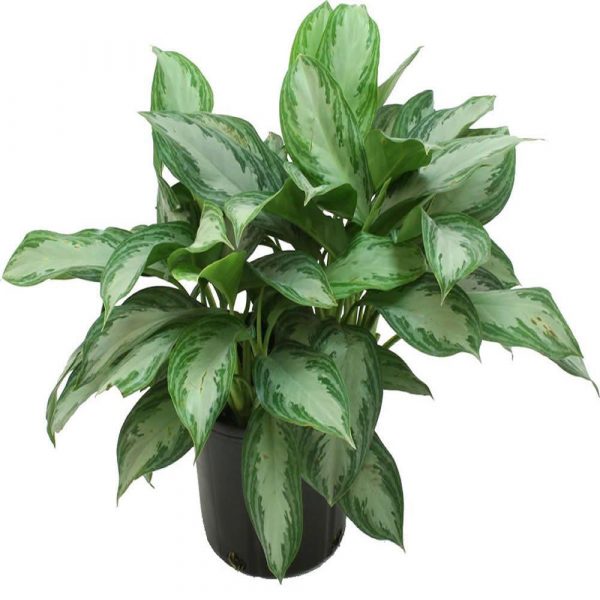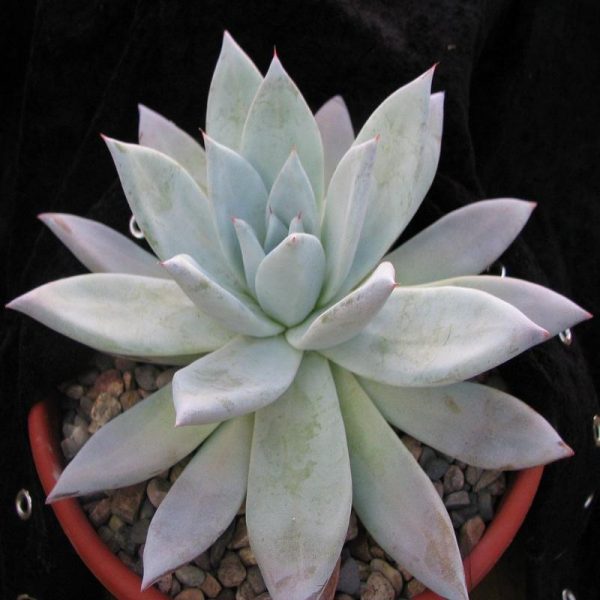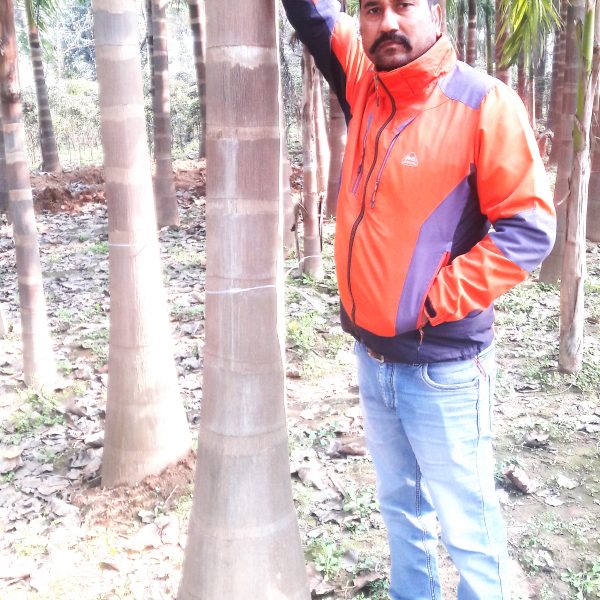Succulent plants have become so popular because they offer low maintenance and varied shapes and textures, both in gardens and indoors. Crassula is a diverse and extensive genus of succulent plants, with about 300 species total, but probably the most well-known of the group is the emerald green jade plant (Crassula ovata)—many know it as a houseplant, but outdoors in warm climates, it actually grows into a shrub.
Crassula plants range from annuals to perennials, herbaceous or woody plants, groundcovers to shrubs to small trees. Many species are small, including some miniatures and creeping groundcovers. Nearly all crassula plants grow slow and steady, and can be tended to and cared for all year round when kept indoors. Crassula plants can be toxic to pets.1
| Common Names | Jade plant, rattlesnake tail, living coral, string of buttons |
| Botanical Name | Crassula spp. |
| Family | Crassulaceae |
| Plant Type | Perennial |
| Mature Size | Varies by species |
| Sun Exposure | Full, partial |
| Soil Type | Moist but well-drained |
| Soil pH | Neutral, acidic |
| Bloom Time | Spring, summer |
| Flower Color | Varies by species |
| Hardiness Zones | 10–12 (USDA) |
| Native Area | South Africa |
| Toxicity | Toxic to pets 1 |
Crassula Plant Care
Most crassula plants grown as houseplants originated from the eastern cape of South Africa. If you have the proper climate, the plants look terrific in the garden, but all look just as excellent indoors.
Given their low water needs, jade plants and other crassula species are ideal for people who tend to neglect their plants. They are hard to kill and easy to propagate from cuttings. Even a single leaf that falls from the plant will often take root in potting mix. However, don’t completely neglect your plant—it still needs water.
Crassula can be sensitive to temperature. If the plants are too hot, they will go dormant and drop their lower leaves. If the plants are too cold, they will fail to grow or thrive. Other than that, they tend to tolerate neglect just fine. With all species, you can aggressively cut the plants back whenever they get straggly or leggy.
:max_bytes(150000):strip_icc():format(webp)/crasslua-3-3f40ab0932c14384a7d07ca5eac33139.jpg)
:max_bytes(150000):strip_icc():format(webp)/crasslua-2-4c5a3407f8ee46da84db64af36da7da2.jpg)
Light
Most crassula plants need some shade in the hottest part of summer but require bright light to attain their most vibrant color. When grown outdoors, a site with morning sun and afternoon shade is perfect (if placed in full sun all day, the leaves may scald). When grown indoors, place your plants in a spot that receives bright indirect light all day, or direct sun for six hours of the day. A southern-facing window is ideal.
Soil
Crassula plants need soil that is very well-draining and will do best in sandy, rocky blends formulated especially for succulents. They prefer neutral to slightly acidic soil, but even extreme pH levels rarely kill the plant. Crassula plants will react badly to boggy, wet soils, as their roots can easily rot.2
Water
As a general rule of thumb, succulent plants prefer sparse watering. To avoid overwatering, soak the plant, allow it to drain completely, then wait for the soil to dry out before watering again.
During cooler months, you can reduce watering, as the roots can rot in cold, wet soil. Crassula plants begin actively growing in the spring, so watch for a slight increase in watering needs. When grown indoors, watering should be minimized from late fall through winter, as the plants go semi-dormant during this time.
Temperature and Humidity
Crassula plants can be grown outdoors as perennials in zones 10 through 12, but elsewhere you will need to bring them in for the winter or grow them as houseplants. Some species will tolerate a mild frost, but temperatures below 30 degrees Fahrenheit may be enough to kill them off. Jade plants and other crassula species prefer low humidity, but they also survive nicely in very humid climates.
Fertilizer
Feed crassula plants sparingly. You can give them a little organic fertilizer that mentions on the label that it’s good for succulents. Fertilize in summer when they start actively growing, but further feeding is not necessary.
Types of Crassula
There are so many species and cultivars of crassula to choose from that you may become a collector. In addition to the standard jade plant cultivars (Crassula ovata), here are a few others that may catch your eye:
- Crassula ‘Morgan’s Beauty’: This hybrid cultivar has silver leaves dusted in white, with pretty pink late spring flowers. It grows about 4 inches tall.
- Crassula erosula ‘Campfire’: This variety has long-branching lime leaves that turn blazing red in winter. It’s a clumping plant that grows about 4 to 8 inches tall and spreads up to 3 feet wide.
- Crassula pellucida variegata: This plant exhibits a flowing mass of heart-shaped leaves variegated in pink, green, and creamy yellow.
- Crassula perforata: Also known as the stacked crassula, this plant has leaves that circle around a central stem, giving it the common name string of buttons.
- Crassula arborescens: Commonly known as Chinese jade or silver dollar jade, this species has rounded blue-gray leaves with maroon edges. It will grow to be an attractive multi-stemmed shrub, as much as 4 feet tall.
- Crassula muscosa: Sometimes known as watch chain, rattail crassula, or zipper plant, this species has small light green leaves that give the stems of rough, corrugate look.
- Crassula capitella: This species has many subspecies, all of which share green leaves that develop strong reddish colors in the sunlight. They are relatively small plants, usually biennial. It is not commonly grown as a houseplant.
Propagating Crassula Plants
Crassula plants are generally propagated from leaf or stem cuttings, which can be much easier than growing new plants from seed. You may want to propagate a few more lucky jade plants, for example, and cuttings will definitely be the fastest way to do that. Starting a new plant is as easy as removing a leaf. Take these steps to take cuttings from a crassula plant.
To propagate with a leaf cutting:
- Remove a leaf from a healthy jade plant.
- Put the leaf in a warm spot indoors (on a paper towel or plate) for several days and let a callus form over the cut area for a week. The callus is important to help the leaf root and prevent rot.
- Dust the callused end of the leaf with rooting hormone (this step is optional).
- Stick the callused end of the leaf into a small pot filled with slightly damp potting mix. Do not water again.
- Put the pot in a warm, bright (but not directly lit) spot.
- After a week or two, the leaf will sprout roots. (The leaf may shrink slightly while establishing roots, but this is normal.)
- Gently water the leaf cutting now (with droplets of water). Some gardeners use a turkey baster or eye dropper for careful watering. You do want to get enough water into the soil without disturbing the roots, however. Let the soil dry out between waterings.
- When the roots are well established (gently tugging on the cutting lets you know how deep the roots go), plant it in a permanent pot or place in the garden at the right time.
To propagate with a stem cutting:
- Take a stem cutting from a healthy plant. The cutting should be about 3 inches long with at least two pairs of leaves.
- Keep the stem in a warm place for several days (on paper towels or a plate) until a callus forms over the cut area, which helps rooting and prevents rot.
- Dip the bottom end of the cutting in rooting hormone (this step is optional).
- Fill a small pot with well-drained potting mix that is slightly damp, but not wet.
- Place the stem upright into the soil; Help it stand on its own with the help of toothpicks or rocks.
- Put the pot in a warm, bright (but not directly lit) spot. Do not water.
- Wait for a week or two until the cutting sends down roots into the potting mix.
- Gently tug on the cutting to check for established roots. Once established, water deeply but gently so the sensitive roots are undisturbed.
- Let the soil dry out between waterings and keep out of direct sunlight until the cutting is ready to be planted in its permanent pot or place in the garden at the right time.
Potting and Repotting Crassula Plants
With the resurgence of succulent container gardening, smaller crassula species are becoming more readily available, and their easy-growing habit makes them worth getting to know. They are perfect container plants—low maintenance, evergreen, and eye-catching.
Choose a medium-sized ceramic pot or sturdy plastic container for your plants, but the containers must have excellent drainage holes to keep the soil and the roots from becoming soggy. Select a potting soil for succulents that has a loose, grainy texture that drains evenly and thoroughly and won’t become clumpy.
Common Pests
While specific pests and diseases may differ between species, most crassula plants encounter issues with aphids, spider mites, mealybugs, and other common pests—especially when grown indoors.3 These issues are best dealt with using non-chemical treatments, such as neem oil or other horticultural oils.








Reviews
There are no reviews yet.